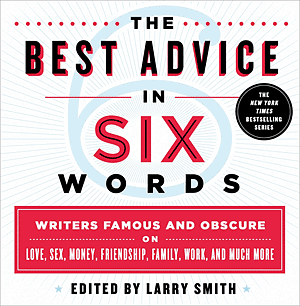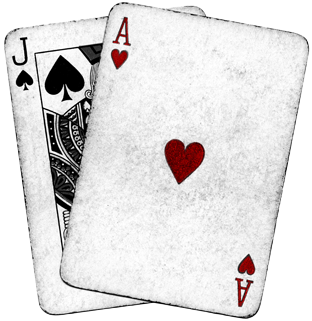The Tale of the Two Glasses
by Jace Daniel (b. 1969)
Once upon a time there was a glass, half empty. To this glass, everything was wrong with the world. It was covered with greasy fingerprints, the beverage it held was getting warm, and the table on which it stood was the wrong color.
“This sucks,” the glass thought. “Things just aren’t going my way.”
Standing next to this glass was another glass, half full. To this glass, the world was full of possibilities. The beverage it held was being enjoyed, and it felt fortunate to be on the table in the first place.
“How exciting,” the glass thought. “This could go anywhere.”
One moment the glass half empty looked at the glass half full. The glass half full smiled.
“Hi,” offered the glass half empty.
“Hi,” smiled the glass half full.
Then the glass half full poured itself into the glass half empty and they enjoyed a new life together happily ever after.










Seeing as the glasses are the characters (not the liquid in them), I find it necessary to note the following possibilities:
1. The liquid represents the spirit, and the glass represents the physical body. The optimist glass has committed suicide so that he can possess the body of the pessimist glass. This obviously means that the optimist glass enjoys looking at his own empty corpse, which calls into question his identity of the optimist. What kind of sadistic beverage would want to haunt his fellow, only to imbue him with a sense of the morbid?
2. The glass represents the whole person, and the liquid represents their possessions. Like Shel Silverstein’s Giving Tree (in my top five favorite philanthropic flora of all time), the optimistic glass gives the pessimistic glass all of his liquid, because he’s nice like that. But they don’t live happily ever after together, no. The pessimistic glass lives in a blissful paradise of brimming materialism–that is, until the thirsty human (a symbol for government taxes, of course) summarily gulps down all of his happiness. The optimistic glass lives alone in the rapture of the self-righteous.
3. The glass represents the whole person, and the liquid represents the liquid inside the person. This is utterly depraved, and not suitable for a family-friendly website such as this.
Seeing as my comment is about as long as the original story (not to mention full of superfluous, redundant, and repetitive verbosity), we must draw one or more of the following conclusions:
1. I am a literary critic nonpareil; my incisive insights incite terror in all tale-tellers.
2. I am incredibly bored.
3. I am incredibly critical.
4. I am literally bored.
5. I am a literary critical board.
6. I am critically bored. Literally.
This was jammed out in a few minutes on a Sunday morning after a dream. Now that you’ve mentioned it, I’ve put on my art analyst hat and am looking at it with a fresh eye in hindsight. I’d say one possibility is that:
4. The liquid represents a thinking person; the glass represents how environmental circumstances — physical or otherwise — can influence the person’s perspective on existence. The two glasses, while identical, have influenced their respective beverages differently. The optimist’s perspective has been independent of (or in spite of) her circumstances in the glass, while the pessimist’s perspective has been shaped by the glass that holds him.
Then the beverages meet. When the optimist beverage mixes with the pessimist beverage, they become one beverage. It’s the metaphor to be had here. When the optimist shares her healthy way of thinking with the pessimist, the pessimist’s perspective changes. Her essence is a stronger influence on him that his glass ever was.
At the end of the day, there was really nothing different about the two beverages. The only thing they didn’t share was their attitude towards life. I suppose the beauty in this story is that we can learn from each other.
The first sentence in your (first) #1 is a loose version of what I would conclude: the story, like life, is not about the glasses. It’s about the substance the glasses contain.
Regardless of my analysis, art means whatever you want it to mean. Glad this one made you think.
Wow, My perspective is nothing as philosophical as Luke’s! I hesitated to comment for that reason. I loved this analogy and feel it stands alone just as it is.
Note to self: next time you want to be funny, just say something about farts.